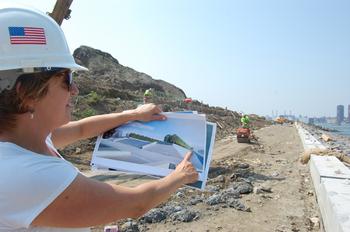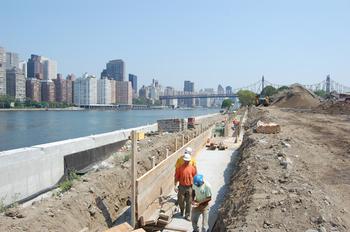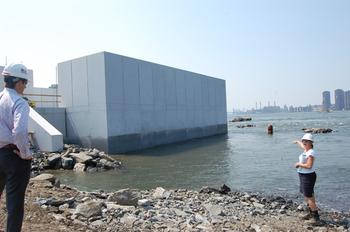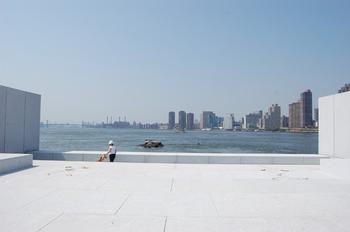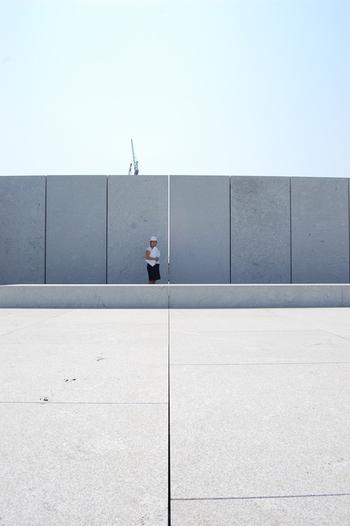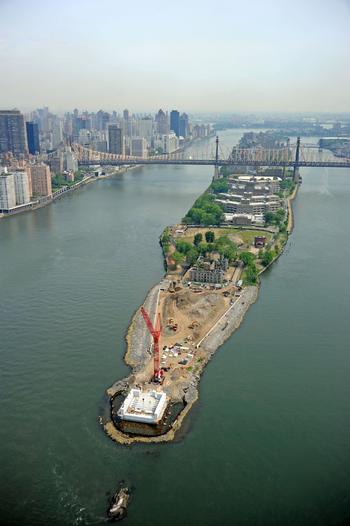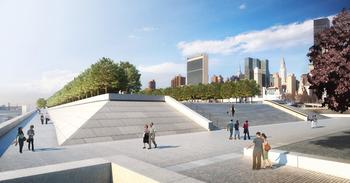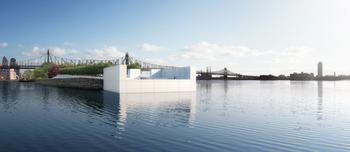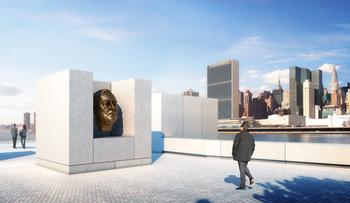Construction of the Franklin Delano Roosevelt memorial on the southern tip of Roosevelt Island has been going on for just several months — but the designs for the structure are nearly 40 years old.
Architect Louis I. Kahn was commissioned in 1973 to design a memorial for the 32nd president after whom the island was renamed. But a year later, as the city was grappling with difficult economic times, Kahn died suddenly of a heart attack, and the project plans were shelved.
In 2005, architect Gina Pollara co-curated an exhibit at the Cooper Union about Kahn's design for the FDR memorial, reigniting interest in the project. Pollara, now the executive director of the Franklin D. Roosevelt Four Freedoms Park, the group that is running the project, said she has been amazed to watch the park come to life after studying the blueprints for so long. She calls Kahn, "an architect's architect."
"I refer to it as almost an Alice in Wonderland because sometimes it feels very big and sometimes it feels very small," she said.
The memorial is situated at the end of the newly landscaped Southpoint Park, which encompasses a total of 14 spacious acres. As you walk through the construction site towards the southern tip of the island, the granite "room" looms ahead. It's the focal point of the park, an open-air plaza with twelve foot high granite walls, each separated by one tiny inch. The granite blocks weigh 36 tons each and were carefully set with cranes and a team of stone setters. More than 200 people are employed on the project.
The park is named for Roosevelt's 1941 State of the Union Speech where he named four freedoms — of speech and expression, of religion, freedom from want and freedom from fear — all of which later became part of the United Nations Declaration of Human Rights. As a founder of the UN, Roosevelt’s memorial will face that iconic building across the East River in Manhattan.
Pollara said, even though it's decades late, the timing for this memorial couldn't be better.
"Now it is so critical to remember all that Roosevelt did to pull us through the Great Depression as we go through our own economic calamity today," she said.
Kahn was known for his ability to create a sense of place in his designs. He used time as a recipe by creating grand focal points, considering how light would enter, and how a person would move through the space. Paul Goldberger is the architecture critic for The New Yorker and the Joseph Urban professor of design at the New School. He said Kahn created experiences in his designs, not just buildings.
"Kahn used to say the sun never knew how great it was until it hit the side of a building," Goldberger recalled, "and you have to stop to think and get that, you know these were stop and smell the roses buildings."
This memorial will be one of just a handful of Kahn creations in the world. He wasn't a prolific architect, but as Goldberger said, "He was like a baseball player who rarely goes up to bat but hits a home run almost all the time."
William vanden Heuvel has been fighting to build the memorial for several years. He was there in 1973 when then New York City's Mayor John Lindsey announced the project, and later founded the Franklin and Eleanor Roosevelt Institute, which pushed to get the memorial built. He said he's always felt an obligation to see the memorial built. In 2003, the release of My Architect: A Son's Journey, a film about Kahn directed by his son, Nathaniel Kahn, also helped to reinvigorate the project, according to vanden Heuvel.
"It's an appropriate time to be inspired," he said. "I think as people of New York become more aware of it, it will inspire a lot of young people to be involved in civic affairs and to understand that we as Americans together have to build our nation."
Vanden Heuvel sees the memorial as an opportunity to teach people about FDR's legacy. Four Freedoms Park, LLC will launch a digital resource when the park opens in the fall of 2012. Visitors will be able to access the history of the Roosevelt years as they walk through with a smart phone, something Louis I. Kahn could only have imagined as he created the blueprints for the memorial in the 1970’s.

